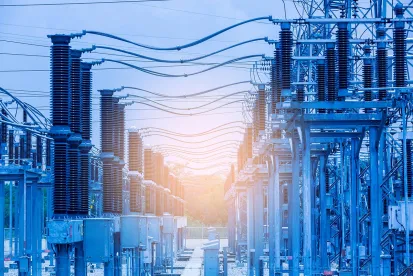There is a lot of buzz around clean technology, distributed energy resources (DERs), microgrids, and other technological innovations in renewable energy and clean transport industries, and how these developments can contribute to solving longstanding environmental justice issues. As these innovations develop, energy markets will undergo substantial changes that consumers and industry participants alike will need to adapt to and leverage in their favor. Every other week, K&L Gates’ The Energizer will highlight emerging issues or stories relating to the use of DERs, energy storage, emerging technologies, hydrogen, and other innovations driving the energy industry forward.
BATTERY COMPANY ESS STARTS TRADING ON THE NEW YORK STOCK EXCHANGE
ESS Inc. (ESS or Company) has become the United States’ first publicly-traded long-duration energy storage company, now trading on the New York Stock Exchange. ESS entered into a business combination with ACON S2 Acquisition Corp., a publicly traded special purpose acquisition company or SPAC, to create the listed company trading under the ticker symbols “GWH” and “GWH.W”.
Launched in Portland, Oregon, in 2011, ESS manufactures a low-cost long-duration iron flow battery whose electrolyte is made of iron, salt, and water. The battery can store energy for up to 12 hours and does not lose capacity as it ages. Conventional energy storage batteries are made of lithium or cobalt, substances that are under short supply globally, can in certain circumstances be toxic to the environment, and last approximately four hours. While the Company has not recorded any revenue, it has entered contracts with several customers including TerraSol Energies in Pennsylvania and Enel Green Power España.
ERCOT MARKET REFORM CONTINUES AFTER WINTER WEATHER EVENT
The Public Utility Commission of Texas has announced the addition of two new board members to the Texas grid operator, the Electric Reliability Council of Texas (ERCOT). Joining the board will be Paul Foster, the former executive chair of Western Refining, Inc., and Carlos Aguilar, president of Texas Central Partners, LLC, a company seeking to develop high-speed train service in Texas. Foster currently serves as the President of Franklin Management, LLC and has been chosen to serve as chair of the ERCOT board, effective October 12. The remaining six board directors are expected to be named in the coming months.
The announcement of two new board members is the latest in sweeping changes made to the grid operator following the February 2021 Extreme Winter Weather Event that led to the near-collapse of the Texas power grid. Recently, the North American Electric Reliability Council (NERC) and the Texas Reliability Entity, Inc. (Texas RE) jointly petitioned the Federal Energy Regulatory Commission (FERC or Commission) to approve several revisions to the Texas RE bylaws, including provisions on governance procedures during an emergency. The revisions would permit a smaller quorum of voting directors to approve actions during an emergency. Additionally, the Texas RE proposed that meetings called under these provisions would not be subject to normal notice and posting requirements.
The Commission accepted NERC and the Texas RE’s proposed revisions, but pushed back on the notice and posting carve-out for emergency meetings. Specifically, the Commission found that the absence of any public notice for emergency meetings of the Texas RE Board conducted under the emergency governance provisions is not consistent with the transparency requirements in Section 215 of the Federal Power Act. The Commission directed NERC and the Texas RE to propose language on compliance that affords some degree of public notice of such emergency meetings.
U.S. DEPARTMENT OF ENERGY INVESTMENT TARGETS EFFICIENT BIOFUEL PRODUCTION
The U.S. Department of Energy (DOE) awarded the Lehigh University Energy Research Center (ERC) a US$3.5 million grant to develop advanced technology to rapidly detect and analyze municipal solid waste (MSW) streams. Specifically, the grant is focused towards developing ERC’s novel process that pairs laser scanning with artificial intelligence (AI) software to produce real-time details on the composition of MSW. According to ERC, the information produced from the new process will increase accuracy of MSW composition analysis by 25 percent from traditional methods and will reduce the analysis time from hours to minutes.
ERC’s AI-based approach utilizes two spectroscopy techniques: laser-induced breakdown spectroscopy, which determines the elemental composition of the waste; and Raman spectroscopy, which determines its molecular composition. Then, the data streams are brought together and analyzed by the AI software. The combination of the two techniques provides biofuel producers a more rapid and detailed picture of the MSW’s contents.
This US$3.5 million grant is part of the DOE’s US$34 million effort to support high-impact research and development to improve and produce biofuels, biopower, and bioproducts. This project could lead to a process that is both easier and more economically feasible, making waste-to-energy a more attractive alternative to the landfill, and moving the United States closer to a more sustainable waste-processing approach.
GE ACHIEVES 14 MW MILESTONE FOR HALIADE-X OFFSHORE WIND TURBINE
GE Renewable Energy (GE) has announced that its prototype Haliade-X has achieved a running rate of 14 megawatts (MW). The prototype is installed in Rotterdam, Netherlands and is an upgraded version of the Haliade-X 13 MW version, which was certified earlier this year in January. GE introduced the first 12 MW Haliade-X offshore wind turbine model in 2019, the largest to be built at the time. GE will now seek certification for the 14 MW category and has begun the official measurements process. Larger and more efficient turbines allow for fewer turbines to be installed at each project site to achieve the same output. The 14 MW Haliade-X would be able to deliver up to 74,000 MW/h per year.
GE’s Haliade-X turbine has received commitments for several wind farms sited off the U.S. East Coast. GE will also supply Haliade-X turbines for the three phases of the Dogger Bank offshore wind farm that will be located off of the United Kingdom coastline, and once completed, will have a nameplate capacity of 3.6 gigawatts. The third phase, Dogger Bank C, will deploy 87 units of the 14 MW model.
EASTERN INTERCONNECTION PLANNING COLLABORATIVE RELEASE WHITE PAPER ON INTERCONNECTION OF RENEWABLES
The Eastern Interconnection Planning Collaborative (EIPC) has released a white paper discussing the challenges involved in connecting renewable energy generation to the electric grid and identifying proposed solutions. EIPC members include many major public and private energy providers such as Duke Energy, Dominion Energy South Carolina, and the Tennessee Valley Authority. EIPC’s membership also includes Eastern Interconnection grid operators such as PJM Interconnection and New York ISO. The members of EIPC are responsible for the planning of the bulk power grid throughout the Eastern Interconnection.
The white paper identifies the key challenges of integrating renewable generation into the grid, including the new grid planning dynamics introduced by weather-dependent wind and solar resources; resource adequacy risks that require more detailed modeling and integrated resource planning; transmission system’s peak use times shifting to non-traditional periods; and the need for additional transmission infrastructure to meet the demands of electrification and integration of new wind and solar generation.
EIPC’s white paper makes several key recommendations to policy makers, including, among others: developing transmission capacity that reliably and cost-effectively integrates increasing levels of new local and remote renewable wind and solar resources; enhancing regional and interregional coordination to address aggressive energy-related public policy goals; promoting collaboration among industry, policymakers, and regulators to ensure energy initiatives are achievable; and requesting for a seat at the table for power system operators and planners to discuss system reliability in the context of energy policy.
Maeve C. Tibbetts and Oretha A. Manu also contributed to this article.






 />i
/>i

